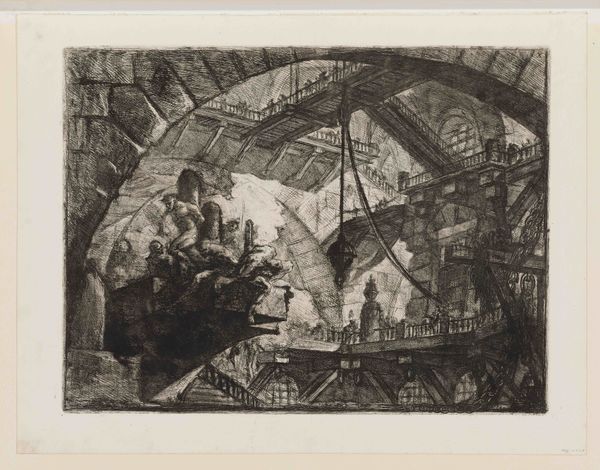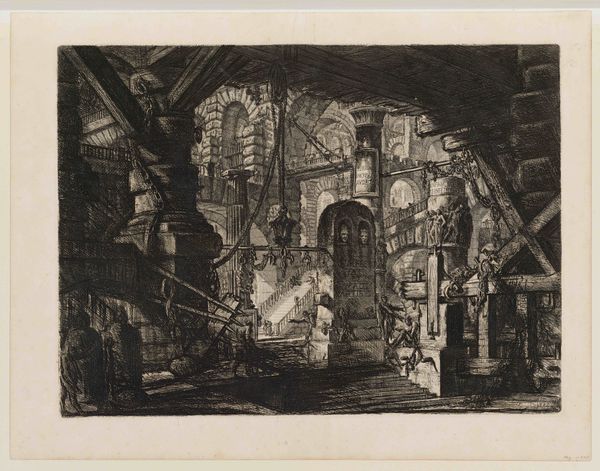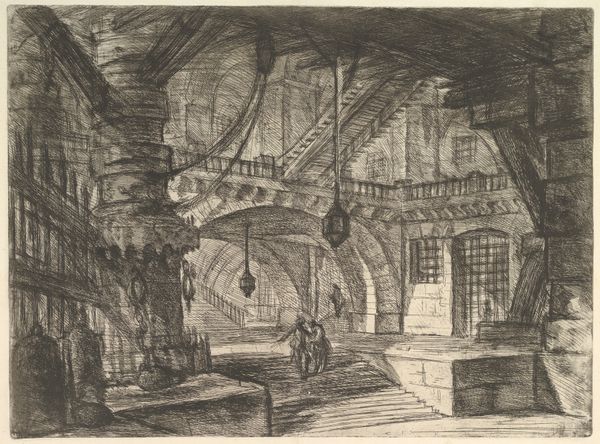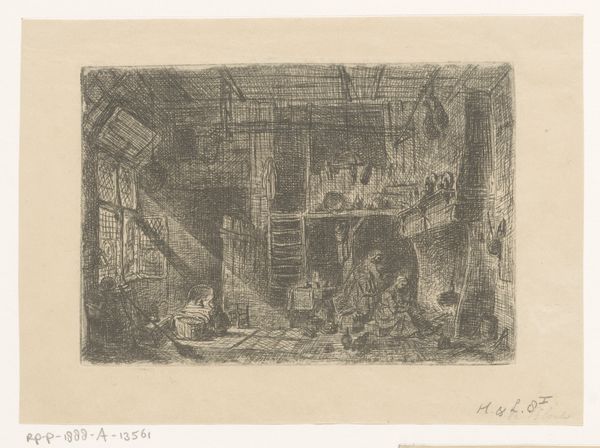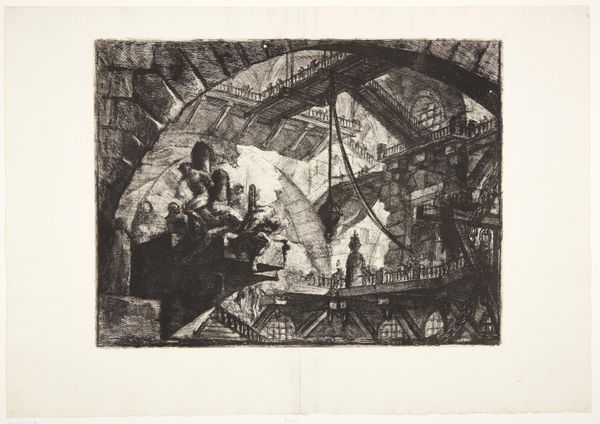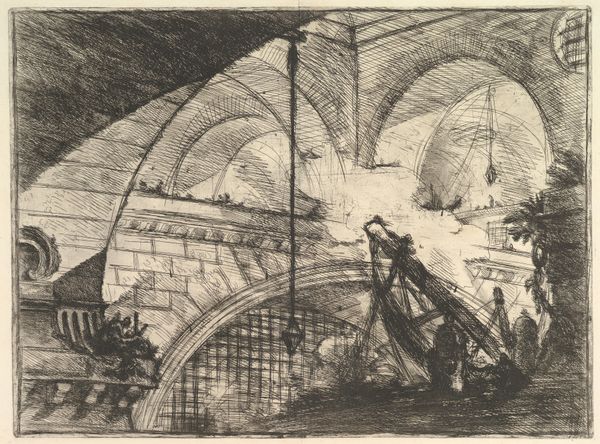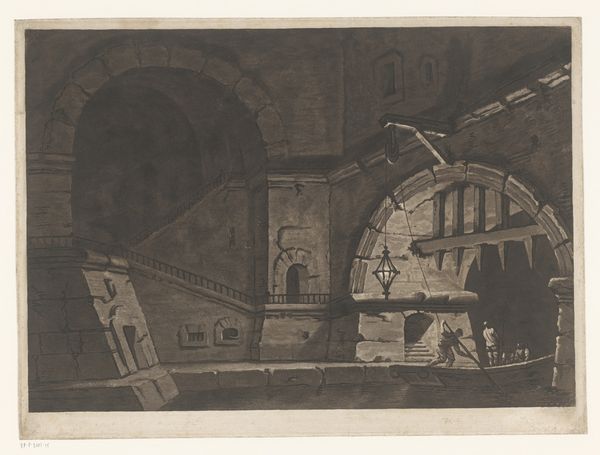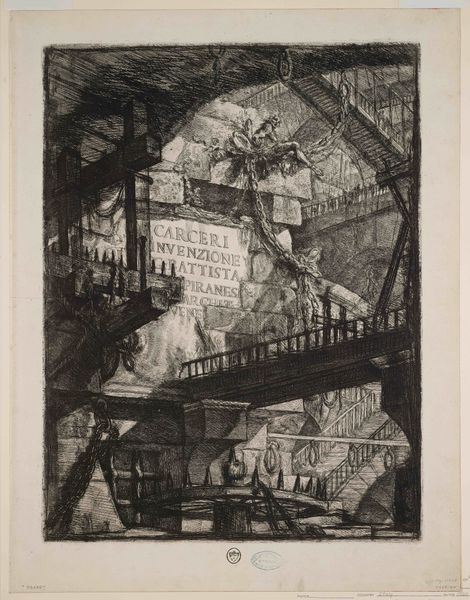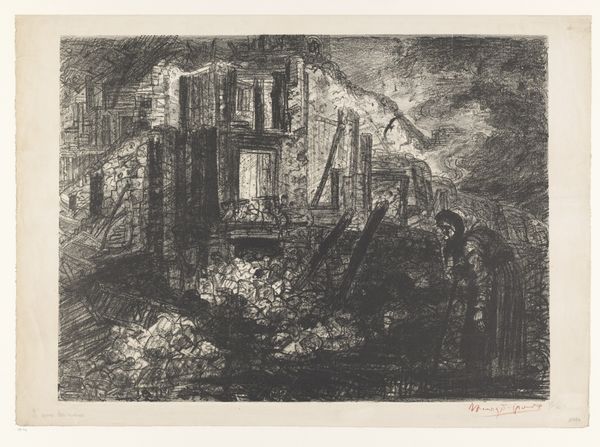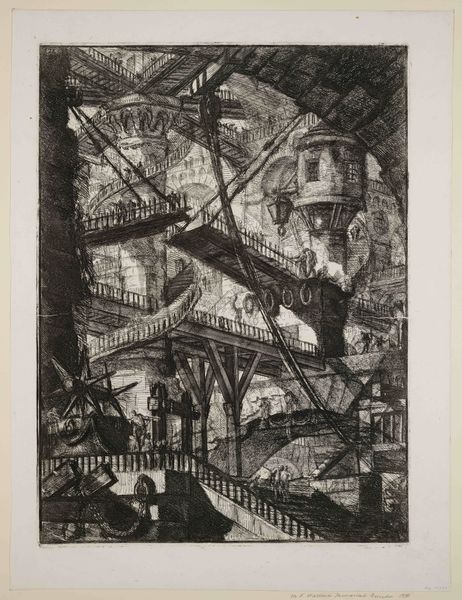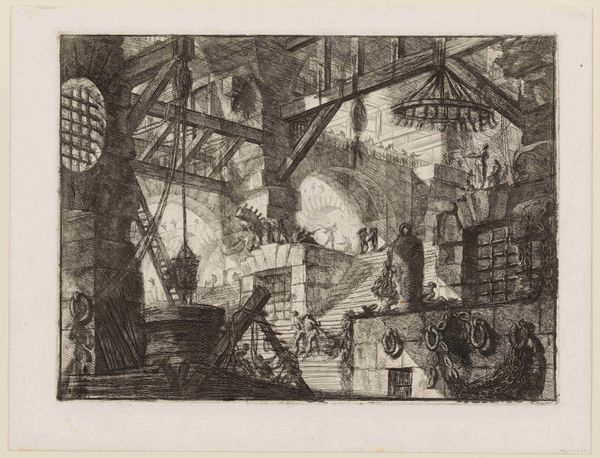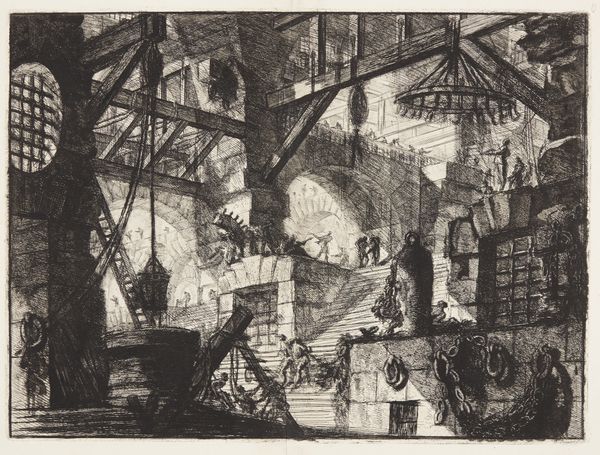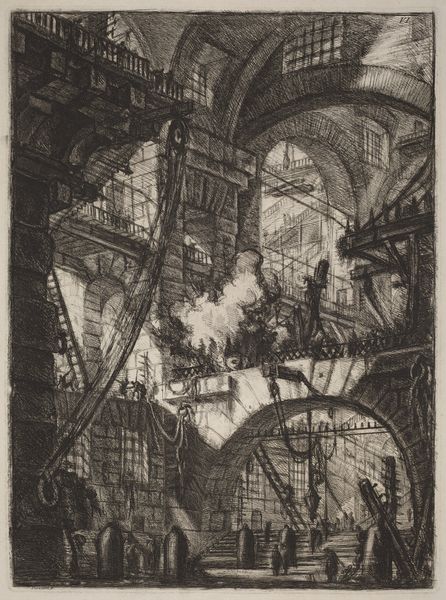
Dimensions: 16 x 21 5/8 in. (40.64 x 54.93 cm) (plate)
Copyright: Public Domain
Editor: So, this is Giovanni Battista Piranesi's "The Arch with the Shell Ornament," created around 1761. It's an etching and engraving, a print showing a fantastical cityscape. It's so intricate, almost dreamlike, but there's also something unsettling about the scale and the implied narratives. What do you see in this piece? Curator: Piranesi masterfully conjures a world both ancient and futuristic, a place where the grandeur of Roman architecture melds with a sort of industrial chaos. Notice how the arch itself, ostensibly the focal point, becomes almost swallowed by the sheer density of detail. It’s a loaded symbol, arches. Triumph, doorways, a sense of passage to other places or times. And consider the shell ornament – a symbol of pilgrimage, of Venus, rebirth... Does it seem to resolve or perhaps deepen the ambiguities presented within the image? Editor: That’s fascinating, I hadn’t considered the symbolic weight of the arch or the shell, but I do agree on this kind of tension: it's very compelling and unsettling. What strikes me most is the implied presence of unseen forces that are somehow affecting the setting. Curator: Precisely. Think of ruins, not as simple remnants of the past, but as active sites where cultural memory persists. The layering of architectural styles, the juxtaposition of delicate ornament and rough-hewn construction, it all speaks to the palimpsest of history, how each age writes itself onto the last. He asks us to reflect on Rome, not as it *was*, but as a constant, evolving projection of human ambition and ingenuity. Editor: That gives me a lot to think about, thanks! Curator: My pleasure. I trust you will observe how, like Piranesi, the artist breathes symbolic weight into your interpretations.
Comments
minneapolisinstituteofart almost 2 years ago
⋮
If the Prisons recall The Phantom of the Opera, it is due to the sublime wonder that overwhelmed Piranesi as he explored the enormous sewers of ancient Rome and to the wonder that later stage designers experienced when exploring and mining Piranesi’s works. They found inspiration in the emotional content of his architecture, its three-dimensional effect, and its complex lighting arrangements.
Join the conversation
Join millions of artists and users on Artera today and experience the ultimate creative platform.
